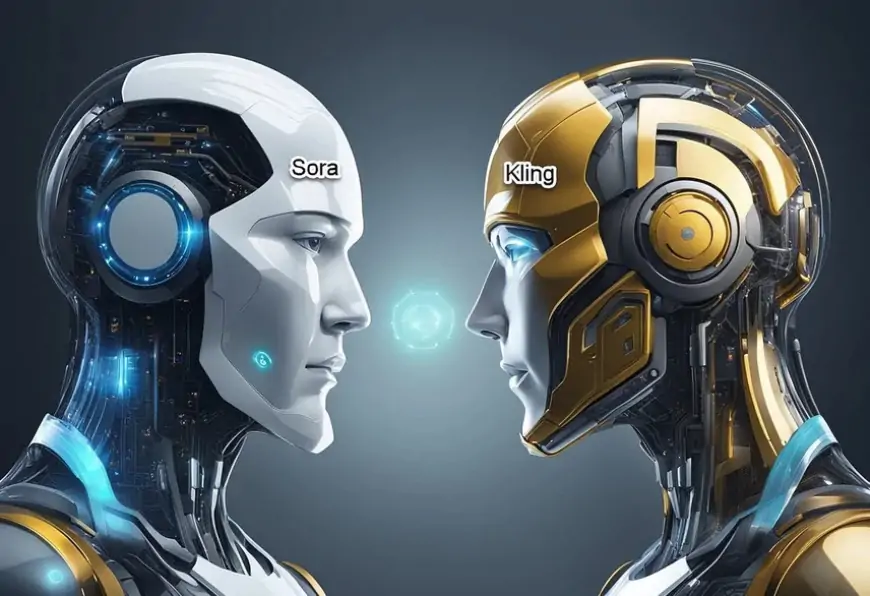Can Kling AI challenge OpenAI’s Sora and succeed?
Explore Kling AI, a new Mandarin text-to-video model by Kuaishou Technology challenging OpenAI’s Sora in creating high-quality, realistic videos.

AI-generated video technology is gaining momentum. Recently, Kuaishou Technology from China introduced Kling AI, a new text-to-video model competing in the market pioneered by OpenAI’s Sora.
Kling AI operates in Mandarin and can produce two-minute videos at 30 frames per second with 1080p resolution. It utilizes 3D face and body reconstruction technology via 3D VAE, enabling realistic movement simulation.
The model joins other advancements like Sora, Google Veo, Runway Gen-3 Alpha, and Haiper AI, facilitating the rapid creation of detailed videos.
Insights into Kling AI: Features and capabilities
Currently, Kling AI is not available for public release but can be accessed through the Kwaiying (KwaiCut) app as a demo, requiring a Chinese phone number for registration.
Kling AI has the capability to create videos up to two minutes long and transform input images into five-second videos. A one-click feature can extend these videos by an additional 4.5 seconds, allowing users to animate static images effectively, such as adding sunglasses to the Mona Lisa, as demonstrated by Kuaishou Technology.
The model utilizes advanced technologies including a diffusion transformer architecture and 3D face and body reconstruction to generate high-quality, realistic videos that simulate natural movements like singing and dancing, enhancing the overall animation quality.
Will Kling AI surpass Sora in the text-to-video market?
The main question surrounding Kling AI is whether it can surpass Sora as the leader in AI video generation.
When Sora was announced earlier this year, its impact was significant due to its high-quality outputs, despite being limited to OpenAI's promotional demos without public release.
Kling AI, while impressive, faces barriers such as the need to translate prompts into Mandarin and use a Chinese mobile number.
However, Kling AI has potential to compete with Sora. It can generate videos up to 2 minutes long, compared to Sora's 1-minute limit. Thomas Randall, from Info-Tech Research Group, notes Kuaishou's advantage with a large video platform and access to extensive data for Kling AI's training.
Yet, Randall believes OpenAI has little reason to worry, especially outside China where Kling AI works best with Mandarin prompts and currently produces only 5-second videos. The claim of longer videos (up to two minutes) isn't a significant enough competitive advantage, and OpenAI could potentially extend Sora's capabilities in the future.
Kling AI vs Sora: A comparison of video capabilities
Both Kling AI and Sora are capable of producing highly realistic videos, each with distinct qualities. Kling AI tends to generate images that appear more realistic, while Sora's style leans towards vibrant content that can sometimes have a synthetic quality.
Noteworthy examples from Kling AI include videos depicting a noodle dish, a girl running in a dark tunnel, and a point-of-view sequence of a bicycle rider. OpenAI's impressive outputs include videos featuring a lady in red, scenes of Tokyo in the snow, and playful puppies in snowy conditions. The "lady in red" clip is often regarded as one of the best AI-generated videos for its style, although Kling AI's examples are noted for appearing less synthetic.
Kling AI stands out for its ability to depict motion convincingly, demonstrated particularly well in examples like the noodle dish and the girl running in the dark tunnel. While OpenAI has also achieved high-quality results, some videos, such as the walking in the "lady in red" clip and the physics of the puppies, show slight unnatural movements.
Additional applications of Kling AI
Aside from the aforementioned examples, Kling AI has demonstrated its capabilities in various other scenarios:
Godzilla vs King Kong: Kling AI has been utilized to create movie trailers, featuring Godzilla and King Kong in confrontational scenes set within dense city environments.
Madmax beer Ccommercial: Another notable application includes an AI-generated video for a Mad Max-themed beer commercial, showcasing Kling AI's ability to tell stories effectively within a short timeframe.
Animated distracted boyfriend meme: Users have creatively employed Kling AI to animate the popular distracted boyfriend meme, albeit with some instances of unnatural motion, maintaining a high-quality appearance.
Squirrel eating a strawberry: Kling AI has been used to generate a natural-looking clip of a squirrel eating a strawberry, highlighting its ability to render realistic animal behavior.
Elon Musk head turn: An example involves animating a static image of Elon Musk, where Kling AI generated additional details to enable realistic head movement.
Otter splashing into water: Kling AI has also been applied to create a short video clip depicting an otter splashing into water, showcasing realistic motion including the water splash and the otter's whiskers.
Kling AI's role in AI video generation
Currently, the global market for AI video generators was valued at $554.9 million in 2023 by Grandview Research, with a projected compound annual growth rate of 19.9% from 2024 to 2030.
Several providers offer text-to-video models, including OpenAI Sora, Google Veo, Runway Gen-3 Alpha, Luma AI, Haiper AI, and Kling AI. It's important to note that Sora, Veo, Gen-3 Alpha, and Kling AI have not yet been widely released to the public but are among the models generating significant market interest.












































